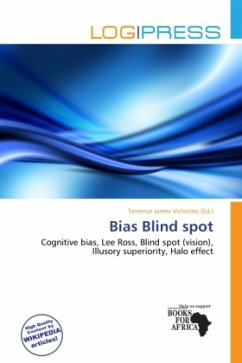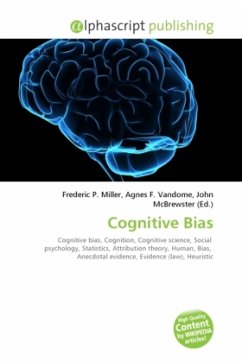Please note that the content of this book primarily consists of articles available from Wikipedia or other free sources online. The bias blind spot is the cognitive bias of failing to compensate for one's own cognitive biases. The term was created by Emily Pronin, a social psychologist from Princeton University's Department of Psychology, with colleagues Daniel Lin and Lee Ross. The bias blind spot is named after the visual blind spot. Pronin and her co-authors explained to subjects the better-than-average effect, the halo effect, self-serving bias and many other cognitive biases. According to the better-than-average bias, specifically, people are likely to see themselves as inaccurately "better than average" for possible positive traits and "less than average" for negative traits. When subsequently asked how biased they themselves were, subjects rated themselves as being much less subject to the biases described than the average person.
Bitte wählen Sie Ihr Anliegen aus.
Rechnungen
Retourenschein anfordern
Bestellstatus
Storno








